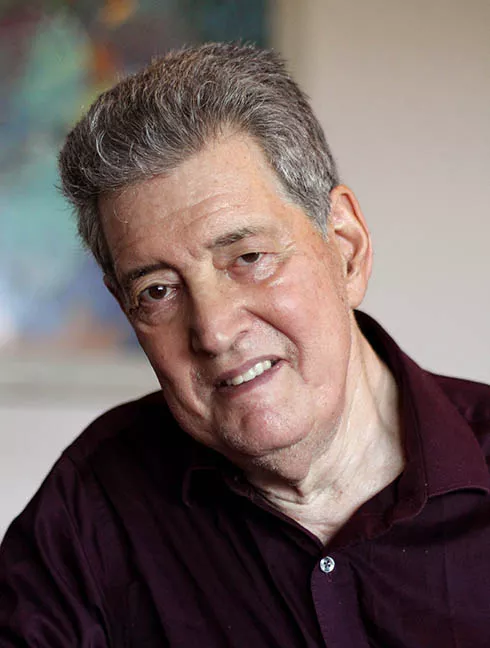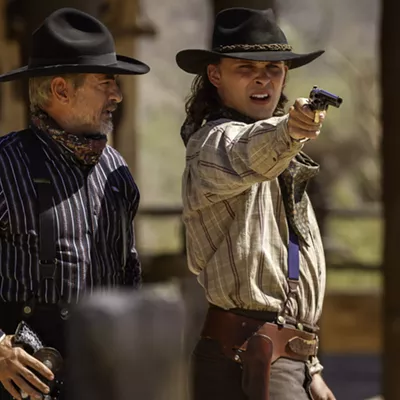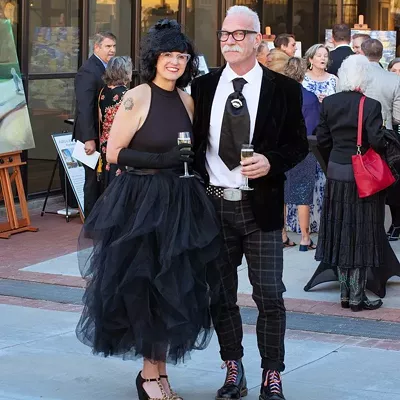At a convention for writers for the underground press and college newspapers, Abe Peck, editor of the Chicago Seed, told the crowd, "Come to Chicago. But we know the police pretty well, and they're going to beat the shit out of you."
Peck was right, of course, but the young writers didn't believe him, says Miller, now a well-known and much-published author who is giving a talk on the pivotal year of 1968 next week at UA Library's Special Collections.
A second speaker at the student conference, John Sack, a writer for national publications, advised the young journalists not to compete with the big-time reporters by trying to cover the whole convention. Instead, he said, "Find a small angle and stick to it."
Miller, then 21 years old, did exactly that.
For two days at the convention he rode around in a medical van operated by a group called the Medical Committee for Human Rights, a team of doctors and nurses determined to give on-the-spot medical care to protestors felled by Mayor Richard Daley's cops.
"I saw a steady stream of the injured," Miller recalled last week. "There was a lot of blood and probably broken bones. I had a great story talking to the medical people and the patients."
He even spoke to a celebrity victim, the noted sculptor Claes Oldenburg.
"Oldenburg was a demonstrator. He was beaten up. He was bloody coming into the van."
And from his perch, Miller got a safe eyeful of the violence in the streets where protesters and press alike ran through the streets, getting bashed on the head by police wielding billy clubs.
"It really was a police riot," Miller said. Ahead of time, "the protestors kept asking Chicago for a place to demonstrate. The city said, 'Nope.'"
Daley allotted the demonstrators only a small space at a band shell in Grant Park, near the convention center where the Democratic delegates were assembling. But demonstrators turned up by the thousands, determined to protest against the Vietnam War and to persuade the Democrats to elect a “peace” candidate.
Twelve thousand police were deployed in riot gear, and as the vivid TV coverage showed, over four days they violently attacked and tear-gassed the demonstrators.
The convention, which took place from Aug. 26 to 29, 1968, exactly 50 years ago, became a watershed event in American history. Leading protestors were convicted of inciting a riot, but their convictions were all vacated on appeal, setting an important legal precedent for the rights of citizens to assemble and protest.
But Republican Richard Nixon won the White House that fall and the war in Vietnam dragged on seven more years, leaving more than 58,200 Americans dead. In Vietnam the carnage was almost unimaginable: Encyclopedia Britannica reports a death toll of two million civilians; 1.1 million North Vietnamese and Viet Cong soldiers; and between 200,000 and 250,000 South Vietnamese soldiers.
For Miller personally, the convention was a turning point. He was already active in the anti-war movement—the Selective Service had awarded him conscientious objector status that freed him from the draft—and "I already had no faith in the system."
But his work at the convention "taught me a lot about journalism," he said. Ever since, he's followed Peck's advice to "find one corner."
In the stories he's published in Rolling Stone, the New York Times, the Smithsonian and elsewhere, and in his 12 books, Miller writes the small details that make up the big picture: he chronicles the lives of regular people along the Southwest border (On the Border), describes the international route traveled by one ordinary hat (The Panama Hat Trail), and profiles a young girl in need of a musical instrument equal to her talent (Cuba, Hot and Cold).
At his talk next Thursday, Miller will detail his personal experiences at the convention and in other activities, including his visits to a Safford, Arizona, federal prison where draft resisters were incarcerated.
On one memorable occasion, he remembers, "a woman was sitting in a corner with a newborn baby. It was Joan Baez," visiting her husband, resister David Harris.
The rest of the world was not immune from the turmoil that the U.S. suffered in 1968. Soviet tanks invaded Czechoslovakia, ending the Prague Spring. Student riots in Paris led to a general strike. Mexican troops slaughtered 10,000 student demonstrators in Mexico City. Violence worsened in Northern Ireland.
Scholars have debated the causes of the worldwide chaos ever since. Some historians point to a domino effect, Miller said, although many of the crises had been festering for years.
"All these things were crescending," he says. "It was an implosion."
It was also a watershed year culturally. The Graduate won as Oscar in 1968, Eldridge Cleaver published Soul on Ice, Otis Reading wrote "Sitting on the Dock of the Bay." Led Zeppelin formed and so did Crosby, Stills, Nash and Young.
And in Tucson, the art colony "Rancho Linda Vista was founded," Miller noted, and "the city started to tear down Barrio Viejo."
Bob Diaz, a librarian who curated the companion Special Collections exhibition 1968 in America, said, "It's a serious topic." He's included documents about the anti-war movement and a prized set of photographs picturing Robert Kennedy on a campaign visit to the UA campus that spring.
"He spoke in an auditorium and outside near Old Main," Diaz said. "He had huge crowds."
Days later, Martin Luther King Jr. was murdered; two months later Kennedy too was shot to death, in Los Angeles.
Miller prepared for his talk by, among other things, watching Yellow Submarine with his grandchildren. The animated Beatles movie—you guessed it—was released in 1968. But the two kids didn't necessarily reveal a rising political consciousness.
"They sat a few feet from the TV engrossed in the movie, seemed amused by the Blue Meanies," Miller reported, "and then left for Funtastics," an amusement park near Tucson Mall.












